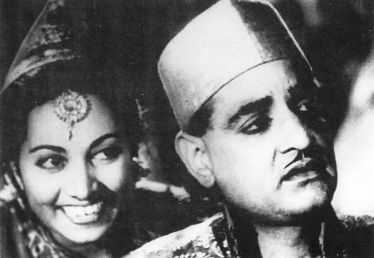Pankaj Kumar Deo
Curiosity about the lives of legends never dies, more so when it is about someone like Kundan Lal Saigal, Hindi cinema’s cult figure whose name became a byword for playback singing with a melancholic strain. Kundan Saigal’s Life and Music attempts to offer new insights into the persona of this singer actor. Saigal’s voice breathed life into playback singing of the early days of “talkies” (1930-40) when playback singing was still at a nascent stage. Saigal was accomplished in both acting and singing. However, it was his singing that left a deep stylistic impact on all subsequent playback singers (Mukesh, Rafi, Lata, et al) who became legends in their own right.
Tragedy was the keynote of both his acting and singing. The book traces his life in Jammu, his birthplace, and tells us how his mother, a bhajan singer, left a deep impact on him during his formative years. A Sufi pir, Yusuf Sultan, had told Saigal’s mother, Kesar Kaur, that her son was “bound to be a great singer”, and one sees the moth and the flame imagery of Sufi songs playing out in Saigal’s life. A loner in the true sense, Saigal was drawn towards drinking like a moth to the flame.
Playing a tragic hero came naturally to him. No wonder essaying the tragic role of Devdas in PC Barua’s eponymous Hindi film in 1936 turned Saigal into a mega star and the film, a runaway success at the boxoffice. This was not only the Hindi film industry’s first adaptation of Sarat Chandra Chattopadhyay’s classic novel but also perhaps the best experimentation of mixing tragedy with romance that became a successful formula to be replicated at box office by future filmmakers. Besides being an alcoholic like Devdas, Saigal had a similar troubled relationship with his father Amar Chand Saigal who was opposed to his son taking up singing as a profession. Amar Chand had utter disregard for music and “felt it was meant for the bhands and mirasis”. Like Devdas, Sarat Chandra’s tragic character, Saigal, too, became a rebel early in his life.
Many people consider “Jab dil hi toot gaya” from Shahjehan (1946), as the theme song of Saigal’s life as future generations of his listeners associated him most with it. The song marked a watershed in the history of Hindi playback singing because, in many ways, it signalled the passing away of one era and the beginning of another. A new generation soon took over the reins of Hindi film music industry. Naushad, the song’s music director, and Majrooh Sultanpuri, the lyricist, were both newcomers whose fame grew in the years to come and so did this song’s popularity.
Naushad later narrated an interesting anecdote about this song, which sums up Saigal’s tragic life. By the time he came to sing this song, Saigal had become an alcoholic who thought he could not sing without drinking. So, Naushad, in order to refute his wrong belief, requested him to sing “Jab dil di toot gaya” before drinking and after drinking. Naushad then asked him to choose the version that he as a singer would consider to be better. Surprisingly, Saigal liked the version that he had recorded when he was sober. When Naushad told him the truth, Saigal said that if he had met Naushad earlier, he would have perhaps lived longer.
Over drinking led to the singer’s untimely demise on 18 January, 1947, the year of India’s independence and partition. Perhaps the most celebrated singer of united India had a premonition of things to come, as he had willed that “Jab dil hi toot gaya” should be played at his funeral. The song went on to rule the radio waves for a long time.
The book not only presents hitherto unknown facets about Saigal’s life but also delineates the era when the Hindi film industry straddled two cities — Calcutta and Bombay. It offers a new perspective on Saigal’s life and presents a plethora of information on the singer’s life and music, including interesting photographs and a detailed filmography. Overall, the book provides a treasure trove of information on a bygone era and the life of a legend. A must-read for all music aficionados and film buffs.
Unlock Exclusive Insights with The Tribune Premium
Take your experience further with Premium access.
Thought-provoking Opinions, Expert Analysis, In-depth Insights and other Member Only Benefits
Already a Member? Sign In Now










